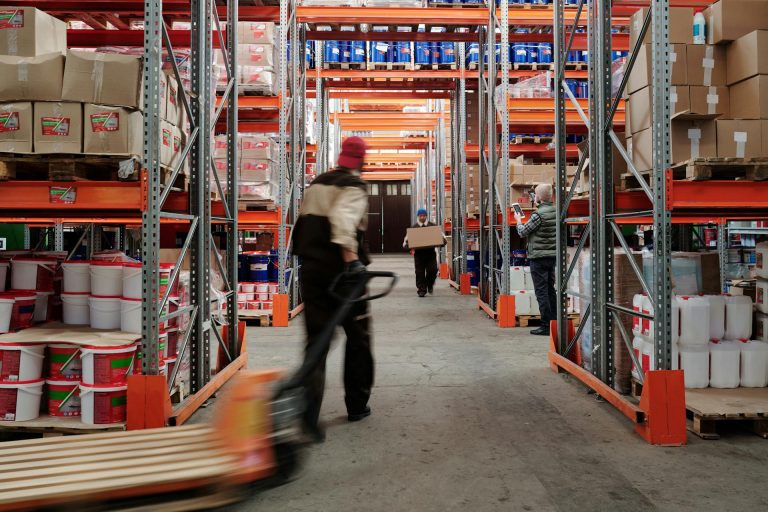Is your warehouse more mess than progress? Picking and packing taking forever? Struggling to keep up with rising order volumes? All of these common issues have a simple answer: Barcode Scanners.
Barcode scanners are the real deal for getting your warehouse running smoothly like a well-oiled machine, and this guide is going to cut through the jargon and show you exactly how to put these scanners to work, step-by-step. It all starts with…’
Identifying Your Business Needs
Assessing Inventory Types
Understanding the variety and characteristics of your inventory is crucial. Different products may require unique barcode types or scanning technologies. For example, perishable goods might need faster scanning to reduce handling time, ensuring a swift movement through the warehouse.
Recognizing these specific requirements can significantly impact your choice of scanners, ensuring they perfectly align with your operational needs. This alignment not only streamlines processes but also reduces the likelihood of errors, ultimately saving time and resources.
To start, conduct a thorough inventory analysis. Categorize your goods, note their storage and handling requirements, and identify any unique characteristics that could influence scanning requirements. This preparatory step is foundational to choosing the right technology.
Volume and Throughput Analysis
The volume of goods moving through your warehouse and the speed at which they move are critical factors in selecting the right barcode scanners. High-volume environments may benefit from fixed scanners that can rapidly process items on conveyor belts, while lower-volume operations might find handheld scanners sufficient and more cost-effective.
This analysis can unveil insights into potential bottlenecks and efficiency improvements. By matching your scanner choice with your operational volume and throughput, you can achieve significant gains in productivity and reduce delays in your supply chain.
Begin by reviewing your current inventory turnover rates and peak processing times. This will help you understand your volume and throughput needs, as well as bottlenecks, enabling you to select a scanner system that can handle your peak demands efficiently.
Select the Right Barcode Scanners
Understanding Scanner Types
Barcode scanners come in various forms, each suited to different operational contexts. Handheld scanners offer mobility and flexibility, ideal for dynamic environments where goods cannot be moved to a scanning station. Fixed scanners, on the other hand, provide efficiency and speed for high-volume scanning points.
Investing in the right type of scanner can significantly enhance your operational efficiency. For instance, handheld scanners can improve inventory management in sprawling warehouses by allowing rapid, on-the-spot scanning.
Evaluate your warehouse layout and the nature of your inventory management processes. This assessment will guide you in selecting the most appropriate type of scanner, whether it’s handheld, fixed, or even mobile computer scanners, to optimize your workflow.
Technology Compatibility
Not all barcode scanners are created equal. Some are better suited for 1D barcodes, while others excel at reading 2D codes. Additionally, consider the connectivity options (e.g., Bluetooth, Wi-Fi) to ensure seamless integration with your existing systems.
Choosing a scanner that is compatible with your warehouse management software (WMS) and existing technology infrastructure is crucial. This ensures smooth data flow and reduces the risk of integration issues, which can lead to operational disruptions.
Ideally, a business should look for a Barcode Software Solution that not only provides features like pallet control, 2D barcodes, and order management, but can be easily deployed through traditional mobile devices for low cost integration for a business.
Software Integration is Key
Choosing a Compatible WMS
The right Warehouse Management System (WMS) acts as the nerve center of your warehouse operations, seamlessly integrating with your barcode scanners to provide real-time visibility and control over your inventory.
A compatible WMS can dramatically enhance your operational efficiency, reducing manual data entry errors and providing instant access to inventory levels, location information, and movement history. This integration forms the backbone of a modern, efficient warehouse operation.
Begin the integration process by mapping out your current inventory workflows and identifying any gaps or inefficiencies that a new WMS could address. This preparatory work is essential for selecting a system that not only integrates well with your barcode scanners but also aligns with your operational goals.
Streamlining Data Flow
Efficient data flow between your barcode scanners and your WMS is critical for real-time inventory tracking and management. Ensuring that the data captured by your scanners is instantly and accurately uploaded to your WMS can reduce errors and provide a real-time view of your inventory.
Streamlined data flow can also enhance decision-making processes, providing managers with up-to-date information for more accurate forecasting and planning. This level of insight is invaluable for maintaining optimal inventory levels and ensuring timely order fulfillment.
To achieve this, work closely with your IT team to ensure that your barcode scanners and WMS are properly configured for seamless data exchange. Regular testing and maintenance are also key to maintaining this integration over time.
Training and Implementation
Employee Training Programs
Your employees are the backbone of your warehouse operations, and equipping them with the necessary skills to effectively use barcode scanners is critical. Comprehensive training programs should cover not only the basic operation of the scanners but also troubleshooting common issues and understanding how they integrate with your WMS.
Effective training ensures that employees can confidently and efficiently use the scanners, minimizing operational disruptions and maximizing productivity. This training should be an ongoing process, with regular updates and refreshers to keep skills sharp and knowledge current.
Develop a training schedule that aligns with your implementation timeline, ensuring that all employees are adequately prepared before the new system goes live. This proactive approach can smooth the transition and help avoid common pitfalls associated with new technology rollouts.
Gradual Implementation
Implementing new technology can be a daunting task, but a gradual rollout can ease the transition. Start with a pilot program in one section of your warehouse, allowing you to identify and address any issues before a full-scale implementation.
This phased approach also provides an opportunity to refine your processes and ensure that the new technology is seamlessly integrated into your operations. By gradually expanding the implementation, you can build confidence and competence within your team, ensuring a smoother overall transition.
Monitor the progress of the pilot program closely, gathering feedback from employees and addressing any challenges that arise. Use these insights to make necessary adjustments before rolling out the technology to the entire warehouse.
Conclusion
The path to a more efficient, productive warehouse starts with the right technology. By understanding your business needs, selecting the appropriate barcode scanners, ensuring seamless software integration, and implementing comprehensive training programs, you can revolutionize your warehouse operations.
Remember, the goal is to streamline your processes, reduce errors, and improve overall efficiency. With careful planning and execution, your warehouse can become a model of modern efficiency, equipped to handle the demands of today’s fast-paced market.
Ready to take the next step? Start by assessing your current operations and identifying areas for improvement. From there, explore the wide range of barcode scanning solutions available and select the ones that best meet your needs.
With the right tools and strategies in place, you can transform your warehouse into a powerhouse of efficiency and productivity. Embrace the future of warehouse management today with the power of barcode scanners.



